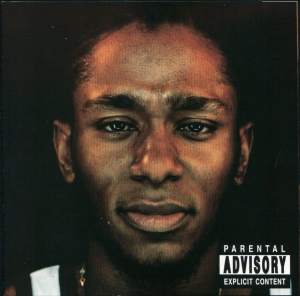After the rap war that became all too real in the mid 1990s, the future of hip-hop was rather uncertain.
In the mainstream, the genre seemed to have lost its way somewhere andplunged into violence, sexism and ignorance. In response, rappers like Mos Def surged to prominence, reasserting the soulful and poetic principles hip hop was founded upon.
In the mid to late 90s, Mos Def made a name for himself in the hip hop game in stints with De La Soul, Da Bush Babees and the rap duo Black Star with Talib Kweli. Mos Def finally released his first solo album Back on Both Sides in 1999.

Although some of Mos Def’s later efforts haven’t been received extremely well, his debut has remained a classic.
Reasons for this abound. From the infectious “Do It Now” featuring Busta Rhymes, to the indicting “Rock N Roll” and “Got,” the jazzy “Umi Says,” to the cleverly-constructed “Ms. Fat Booty” and “Mathematics,” Black on Both Sides flows from front to back.
Mos Def proves himself a true MC, rhyming his way fluidly through various themes such as racism, ego, pollution and love of his hometown, NYC.
In terms of beats and production, Mos Def arrived armed with a heavy arsenal of producers and a few collaborators – the aforementioned Busta, as well as Kweli on “Know That,” Vinia Mojica on “Climb” and Q-Tip on “Mr. Nigga.”
Alongside the likes of DJ Premier, 88 Keys and Ayatollah, Mos Def receives partial or full production credit on 8 of the album’s 17 tracks, and plays many of the instruments on the album (check out “Rock N Roll” to hear his Bad Bones-inspired punk break).
Having his hand in every part of creating this album helped Mos Def accomplish something most artists can never do, especially on their debut album – make an album that is completely and totally his.
Mos Def’s lyrical swagger on Black on Both Sides remains its legacy, as well as his. Mos Def weaves lines that are pure poetry. He never allows himself to fall into simple rhythms in his vocal delivery and, of course, he keeps the dialogue interesting throughout.
Mos Def says it best, so if you think about coming at him listen to him on “Hip Hop”:
“Scrutinize my literature from the large to the miniature
I mathematically add-minister
Subtract the wack selector,
Wheel it back, I’m feeling that
(Ha ha ha) From the core to the perimeter black,
You know the motto
Stay fluid even in staccato”
And it’s all true.
He goes beyond mere line mastery, ensuring that all subjects are structured and dealt with creatively. In “Ms. Fat Booty,” probably the track most thematically akin to mainstream rap, Def ensures that the subject is delivered dramatically.
He breaks up an encounter with Ms. Fat Booty into scenes. In “Mathematics” he lays on stats about the inequities of the American lifestyle, in numerical order:
“Yo it’s 6 Million Ways to Die, from the seven deadly thrills
Eight year olds gettin found with 9 mill’s
It’s 10 P.M., where your seeds at? What’s the deal?
He on the hill puffin krill to keep they belly filled”
Black on Both Sides remains today a hip hop classic because it is an example of an artist taking over the reigns of his project in order to assert what he believes his genre should be. With this album, Mos Def knew what he wanted to talk about and how he wanted to talk about it. Then he just did it.






